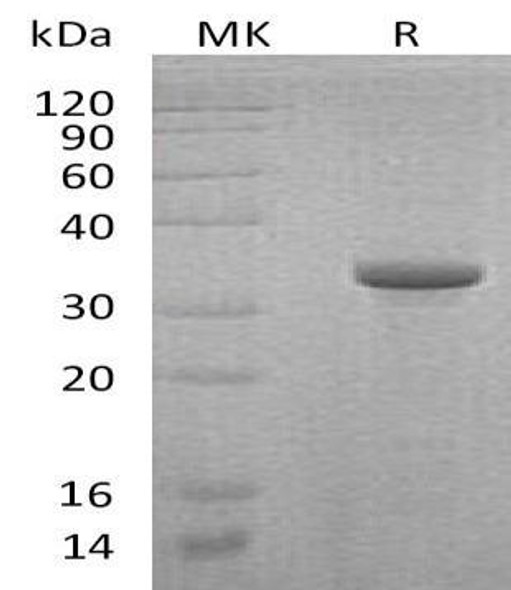Endoglin, also known as CD105, is a type I homodimeric transmembrane glycoprotein with a large, disulfide-linked, extracellular region and a short, constitutively phosphorylated cytoplasmic tail. Endoglin contains an RGD tripeptide which is a key recognition structure in cellular adhesion,,suggesting a critical role for endoglin in the binding of endothelial cells to integrins and/or other RGD receptors. Endoglin is highly expressed on vascular endothelial cells, chondrocytes, and syncytiotrophoblasts of term placenta. It is also found on activated monocytes, mesenchymal stem cells and leukemic cells of lymphoid and myeloid lineages. As an accessory receptor for the TGF-β superfamily ligands, endoglin binds TGF-β1 and TGF-β3 with high affinity not by itself but by associating with TGF-β type I I receptor (TβRII) and activates the downstream signal pathways. In addition, in human umbilical vein endothelial cells, ALK-1 is also a receptor kinase for endoglin threonine phosphorylation, and mutations in either of the two genes result in the autosomal-dominant vascular dysplasia, hereditary hemorrhagic telangiectasia (HHT). Endoglin has been regarded as a powerful biomarker of neovascularization, and is associated with several solid tumor types.













